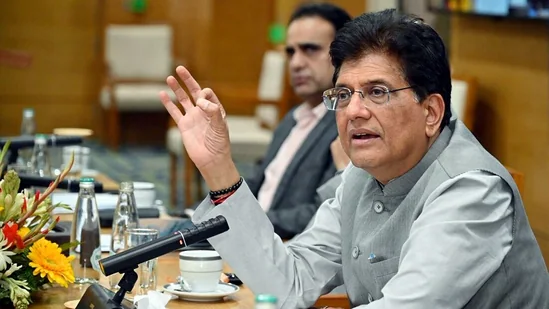India’s ₹75,000 Crore Shipbuilding Push to Transform Maritime Industry
- MGMMTeam

- Aug 19
- 3 min read
The Indian government has announced a landmark investment of ₹75,000 crore to establish three state-of-the-art shipbuilding clusters on both the eastern and western coasts of the country. This initiative, spearheaded by the Ministry of Ports, Shipping, and Waterways, represents one of the most ambitious maritime development plans in India’s history. It seeks to position India as a global shipbuilding hub, reduce dependence on foreign yards, and bolster domestic employment while advancing the nation’s economic and strategic interests.

Strategic Rollout and Timelines
The clusters will be developed as greenfield projects over the next four to five years, each requiring around ₹25,000 crore in investment. Alongside these new developments, the government also plans to upgrade existing facilities under brownfield projects. The initiative is being closely coordinated with both domestic shipbuilders and international partners to ensure world-class infrastructure and technology integration.
Coastal States Leading the Race
Several states have emerged as frontrunners in hosting these shipbuilding hubs. Tamil Nadu, Gujarat, and Odisha have already identified land, set up Special Purpose Vehicles (SPVs), and commissioned techno-economic feasibility studies. Other states like Andhra Pradesh and Maharashtra remain in discussions to attract projects. The strategic distribution of these clusters is intended to create a balanced maritime ecosystem across both coasts, enhancing India’s logistics and trade efficiency.
Tamil Nadu, in particular, has gained momentum with plans for a ₹10,000 crore project involving South Korea’s HD Hyundai in partnership with Cochin Shipyard Ltd. This collaboration highlights India’s increasing ability to attract top global shipbuilders to its shores, combining domestic capacity with international expertise.
Financing the Maritime Vision
The funding backbone of this initiative comes from the Maritime Development Fund (MDF), initially announced in the Union Budget at ₹25,000 crore but now expanded to ₹70,000 crore. The MDF follows a blended-finance model, with 49% concessional capital from the government and 51% raised from commercial banks, multilateral lenders, and private investors. This approach ensures that the financial burden is shared while leveraging global capital for long-term growth.
In addition, the government is strengthening the Shipbuilding Financial Assistance (SBF) policy, offering tiered incentives for building different classes of vessels. Standard ships costing up to ₹100 crore will receive 15% support, while advanced ships above that threshold will get 20%. Most significantly, green vessels will receive up to 25% support, aligning with India’s commitment to sustainable shipping practices.
Vision 2030 and 2047: Building a Maritime Superpower
India’s maritime aspirations are encapsulated in Maritime Vision 2030 and Vision 2047. At present, only 5% of India’s shipping fleet consists of Indian-built vessels. The government aims to increase this to 7% by 2030 and an ambitious 69% by 2047. Beyond fleet expansion, the target is to elevate India into the top 10 shipbuilding nations by 2030 and among the top 5 by 2047.
With its 7,500-kilometre coastline spanning nine states, India possesses a natural geographic advantage in global shipping routes. Strengthening shipbuilding capabilities not only enhances trade competitiveness but also carries immense strategic value in safeguarding maritime security and reducing reliance on foreign powers.
Blue Economy and Regional Development
States like Tamil Nadu are aligning shipbuilding with broader Blue Economy strategies, which aim to use coastal resources for sustainable growth. Alongside shipyards, investments in seafood processing, coastal tourism, cold chains, and skill development are planned to bring prosperity to coastal districts. Experts suggest that each direct job in shipbuilding generates up to seven indirect jobs, creating a multiplier effect for local economies.
These projects also tie into national infrastructure programs like the Sagarmala initiative and industrial corridors such as the East Coast Economic Corridor (ECEC) and Chennai–Kanyakumari Industrial Corridor (CKIC), ensuring integration of ports, industry, and logistics under a unified growth strategy.
Defence and Technological Edge
Beyond commercial benefits, the shipbuilding clusters will bolster India’s defence shipbuilding capacity. Institutions such as NIRDESH in Kerala are already working on advanced naval research, while the Ministry of Defence is commissioning next-generation offshore patrol vessels. Plans for a deep-water shipyard in Trivandrum (Poovar) further strengthen India’s ability to build and service ultra-large vessels, enhancing naval preparedness and export potential.
Conclusion: Sailing Towards a Maritime Powerhouse
The ₹75,000 crore shipbuilding initiative is more than just an industrial project—it is a blueprint for India’s rise as a maritime superpower. By combining global partnerships, sustainable financing, Blue Economy strategies, and defence integration, the government is laying the foundation for long-term economic and strategic strength. If executed successfully, India could not only meet its fleet expansion targets but also secure a leading position in global shipbuilding by 2047.
(Sources: OpIndia, Livemint, Economic Times)




Comments